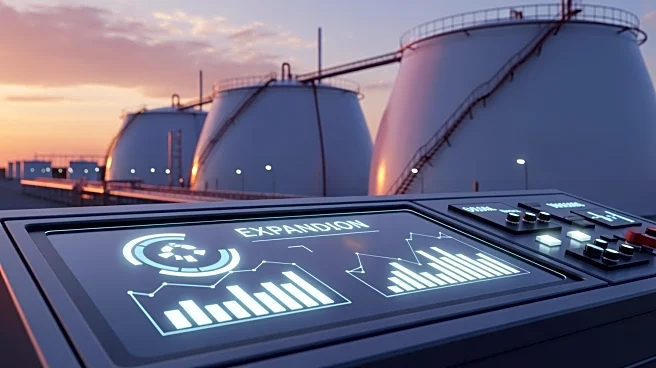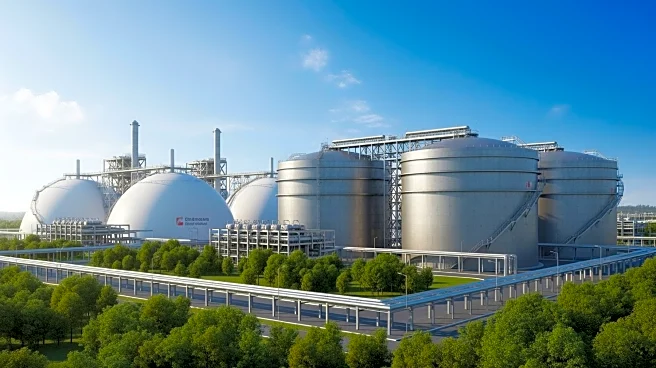What's Happening?
Liquefied natural gas (LNG) exporters in the United States have announced plans to significantly increase the country's liquefaction capacity. According to the U.S. Energy Information Administration (EIA), the expansion will add an estimated 13.9 billion
cubic feet per day (Bcf/d) by 2029. The U.S. currently holds the position as the largest LNG exporter globally, with a capacity of 15.4 Bcf/d. The EIA's forecast, based on its Liquefaction Capacity File and trade press reports, indicates that North American LNG export capacity is set to rise from 11.4 Bcf/d at the start of 2024 to 28.7 Bcf/d by 2029, contingent on the completion of projects currently under construction. Additionally, Canada and Mexico are expected to contribute to this growth, with plans to add 2.5 Bcf/d and 0.6 Bcf/d of capacity, respectively.
Why It's Important?
The planned expansion of LNG export capacity in North America is poised to have significant implications for the global energy market. As the U.S. solidifies its position as the leading LNG exporter, this growth could enhance its influence in international energy trade. The increase in capacity is expected to account for over 50% of global additions through 2029, according to the International Energy Agency. This development may lead to increased competition among LNG exporters and could impact global LNG prices. Furthermore, the expansion aligns with broader energy strategies aimed at reducing reliance on traditional fossil fuels and transitioning to cleaner energy sources. Stakeholders in the energy sector, including investors and policymakers, will likely monitor these developments closely as they could affect energy security and economic dynamics.
What's Next?
As the U.S. and other North American countries move forward with their LNG capacity expansion plans, several factors will influence the outcome. The successful completion of ongoing construction projects is crucial for achieving the projected capacity increases. Additionally, regulatory approvals and environmental considerations may play a role in shaping the timeline and scope of these expansions. Stakeholders, including energy companies and government agencies, will need to address potential challenges related to infrastructure development and market demand. The evolving geopolitical landscape and shifts in global energy policies could also impact the trajectory of LNG exports from North America.















